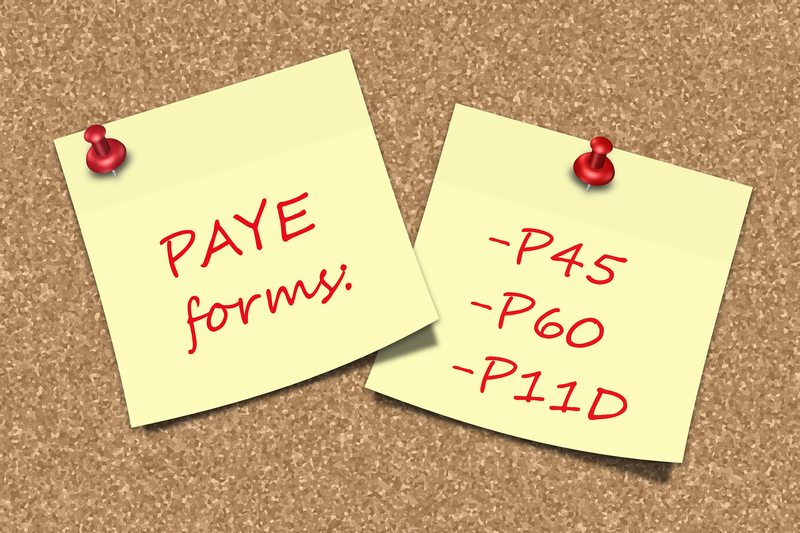Storing Your Freezer Safely When It's Not in Operation
Posted on 19/06/2025
Whether you're moving to a new home, renovating your kitchen, or simply not needing your freezer for a season, proper storage is crucial to ensure it remains in optimal condition for future use. Freezers are significant investments, and improper storage can lead to mold, unpleasant odors, electrical problems, or even irreparable damage. This comprehensive guide will take you through everything you need to know about storing your freezer safely when it's not in operation, including expert tips and practical advice to maintain your appliance's lifespan and efficiency.
Why Properly Storing Your Freezer Matters
Freezers require careful handling, especially during periods of inactivity. Failing to store your freezer correctly can result in:
- Mold and mildew buildup
- Unpleasant and persistent odors
- Electrical component deterioration
- Rust or corrosion
- Unwanted pests
By understanding the risks and following the right steps, you can easily avoid these issues and keep your freezer in top condition.

Preparing Your Freezer for Storage
1. Defrosting Your Freezer
Before you store your freezer, you need to defrost it completely. This is critical because leftover ice can melt and cause water damage, while moist environments are breeding grounds for mold and mildew.
- Unplug the freezer from the electrical socket.
- Remove all food items and move them to another freezer or cooler.
- Place towels or absorbent materials around the base to catch melting ice and water.
- Allow all ice and frost to melt naturally. Avoid using sharp objects to accelerate the process, as this can damage the freezer's internal walls.
Defrosting might take several hours, depending on how much ice has built up.
2. Thorough Cleaning
After defrosting, a deep clean is indispensable. This will prevent odors, bacteria, and pests from making a home inside your idle freezer.
- Remove drawers, shelves, and any detachable parts. Wash them with warm, soapy water; rinse and dry thoroughly.
- Clean the interior with a mixture of 1 tablespoon baking soda per quart of warm water. This neutralizes odors and disinfects the surfaces.
- Wipe down all surfaces with a clean, damp cloth to remove residues.
- Dry every part meticulously to eliminate any moisture.
Never leave any food particles or sticky spills inside--even the smallest crumb can cause big problems later!
3. Unplugging the Appliance
Once the freezer is clean and dry, unplug it from the power supply for safety and energy saving. Coil the cord neatly and secure it with a Velcro strap or twist tie to avoid tripping hazards or tangling during storage.
If possible, store the cord on top of or inside the freezer, out of reach of pests or moisture.
Choosing the Right Location for Storage
Where you store your freezer when it's not in operation is just as important as the preparation process.
Ideal Storage Environment
- Dry Space: Humid environments increase the risk of corrosion and mold. Opt for a dry, well-ventilated area.
- Moderate Temperatures: Extreme heat can warp seals and plastic parts, while freezing temperatures may cause residual water to damage internal components.
- Away from Direct Sunlight: Sunlight can discolor and damage the exterior and interior components over time.
- On a Flat Surface: Uneven placement can stress the compressor or warp the appliance's structure.
Common Locations for Storing a Freezer
- Basement (if dry and climate-controlled)
- Garage (provided temperature extremes and humidity are controlled)
- Spare room or pantry
- Storage unit (check terms regarding appliances)
Tip: Avoid unfinished basements or sheds unless you're sure they remain dry and pest-free year-round.
Positioning the Freezer for Storage
Should You Store a Freezer Upright or Lying Down?
Always store the freezer upright if possible. This protects the compressor oil and prevents it from leaking into refrigerant lines, which can cause severe damage when restarting the appliance.
If you must move or briefly store it on its side, allow it to rest upright for at least the same amount of time it spent on its side before plugging it back in. This allows the oil to drain back into the compressor.
Protecting Your Idle Freezer
Door and Seal Care
- Leave the Door Ajar: Top tip: never close the door tightly during long-term storage. Keeping the door slightly open allows air circulation, prevents odor buildup, and discourages mold growth.
- Use a door wedge or fold a towel to hold the door open a few inches.
- Seal Conditioning: Lightly rub a thin layer of petroleum jelly on the gasket to keep the material supple and extend its lifespan.
Pest Prevention
- Clean the exterior and surrounding storage area.
- Consider sprinkling baking soda within the appliance to neutralize odors and deter pests.
- If rodents are a risk, place a natural deterrent, like a sachet of peppermint oil nearby (but not inside).
- Check the area regularly for any signs of pests.
Routine Checks During Storage
Don't neglect your stored freezer! Regular maintenance checks are essential for ensuring that issues do not develop unseen.
- Inspect the interior for moisture, mildew, or odors at least once a month.
- Check the cord, plug, and seals for any signs of wear, cracking, or rodent damage.
- Make sure the door remains slightly open and hasn't accidentally closed.
- Replenish baking soda or pest deterrents as needed.
Covering and Protecting the Exterior
A well-protected exterior is vital for keeping dust, dents, and scratches at bay during inactive periods.
- Use a breathable cover: Cover your freezer with a cotton or canvas dust sheet. Avoid plastic, which traps moisture and can lead to rust.
- Cushion vulnerable areas: If the freezer will be in a high-traffic or cluttered area, cover the corners with foam or cardboard for added protection.
- Avoid stacking: Don't place heavy objects on top of your freezer, which can damage the lid, hinges, or internal components.
Restarting Your Freezer After Storage
1. Inspect Thoroughly Before Powering Up
- Check for visible damage, especially to seals, power cord, and interior surfaces.
- Ensure the freezer is upright, on a flat surface, and the door closes securely.
- Remove any sachets, baking soda boxes, or pest deterrents.
2. Plug In and Test
- Plug the appliance back in and listen for normal operation noises.
- Allow the freezer to run for several hours and check for cold air and frost buildup.
- Wipe down all interior surfaces one more time before restocking with food.
Common Myths About Storing Freezers Unused
- Myth: You Should Tape the Door Shut.
Reality: Taping or sealing the door causes odor and mold issues. Always leave it open a crack. - Myth: Defrosting Is Unnecessary for Unplugged Freezers.
Reality: Leftover ice can melt and cause rust, mold, and bacteria. - Myth: Any Storage Location Will Do.
Reality: Damp, unventilated, or outdoor areas can quickly ruin a freezer's components.
Expert Tips for Long-Term Storage of Your Freezer
- Document everything you do for storage (defrost date, checks, cleaning) for warranty and maintenance records.
- Photograph the appliance before covering, to remember where each piece goes (especially for chest freezers with detachable baskets or bins).
- Consult your freezer's user manual for brand-specific recommendations about long-term storage.
- If storing for more than a year, consider a professional maintenance check before restarting.

Frequently Asked Questions About Freezer Storage
How long can I safely store my freezer unused?
With proper preparation and a good storage environment, a freezer can be stored for months or even years without damage. However, always check and maintain it regularly.
Can I store my freezer in the garage?
Garages are popular for idle appliances, but only if they stay dry and climate-controlled. Excess heat or freezing temperatures can damage the compressor or seals over time.
Should I remove the freezer door for safety?
If children or pets will have access to the storage area, removing the door or securely strapping it open with a heavy-duty strap is safer to prevent accidental closure and entrapment.
Does unplugging a freezer damage it?
No--unplugging your freezer is safe and necessary for storage. Just ensure it's completely dry and clean to prevent any internal issues during downtime.
Final Thoughts: Protecting Your Appliance Investment
Storing your freezer safely when it's not in operation isn't complicated, but it does require careful planning and attention to detail. By thoroughly defrosting and cleaning your freezer, ensuring a dry and temperate storage environment, protecting the appliance against pests and accidental closure, and making routine checks, you can keep your freezer ready for reliable performance whenever you need it again.
Taking these steps will save you time, money, and headaches in the long run--ensuring that your freezer stays functional, odor-free, and energy-efficient for years to come.
Proper freezer storage is about more than just unplugging the unit. It's an essential part of appliance care that every homeowner should know. Treat your freezer well during periods of inactivity, and it will return the favor when it's time to chill again!














